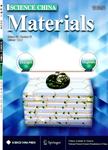A dual-electrolyte system for photoelectrochemical hydrogen generation using CuInS_2-In_2O_3-TiO_2 nanotube array thin film
CuInS_2-In_2O_3-TiO_2纳米管阵列薄膜双电介质体系在光电化学产氢中的应用(英文)作者机构:Particles and Catalysis Research Group School of Chemical Engineering The University of New South Wales
出 版 物:《Science China Materials》 (中国科学(材料科学(英文版))
年 卷 期:2018年第61卷第6期
页 面:895-904页
核心收录:
学科分类:081702[工学-化学工艺] 07[理学] 070205[理学-凝聚态物理] 08[工学] 0817[工学-化学工程与技术] 080501[工学-材料物理与化学] 0805[工学-材料科学与工程(可授工学、理学学位)] 0702[理学-物理学]
基 金:supported by the Australian Research Council (DP170102895)
主 题:dual-electrolyte hydrogen generation photoelectrochemical TiO2 nanotubes CuInS2
摘 要:The utilization of Na2S/Na2SO3 mixture as the electrolyte solution to stabilize sulfide anode in a photoelectrochemical cell for hydrogen evolution generally compromises the current-to-hydrogen efficiency(ηcurrent) of the system. Here, the employment of a dual-electrolyte system,that is, Na2S/Na2SO3 mixture and p H-neutral Na2SO4 as the respective electrolyte solutions in the anode and cathode chambers of a water splitting cell is demonstrated to suppress the photocorrosion of CuInS2-In2O3-TiO2 nanotube(CISIn2O3-TNT) heterostructure, while simultaneously boosts theηcurrent. Although n-type CIS and In2O3 nanoparticles can be easily formed on TNT array via facile pulse-assisted electrodeposition method, conformal deposition of the nanoparticles homogeneously on the nanotubes wall with preservation of the TNT hollow structure is shown to be essential for achieving efficient charge generation and separation within the heterostructure. In comparison to Na2S/Na2SO3 solution as the sole electrolyte in both the anode and cathode chambers, introduction of dual electrolyte is shown to not only enhance the photostability of the CIS-In2O3-TNT anode, but also lead to near-unity ηcurrentas opposed to the merely 20% ηcurrentof the single-electrolyte system.



